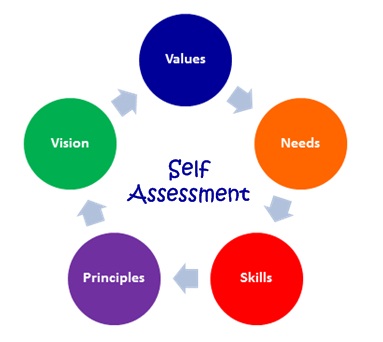Did you know that January is the most popular month for considering a job change? After the year-end bonuses and year-end reviews are complete, employees start to look at their options a little more closely. Of course, there’s questioning from many organizations today surrounding the use of performance reviews at all (which we’ve blogged about previously here: https://peoplescapehr.com/are-performance-reviews-on-the-way-out/). But, if your organization does use performance reviews, then we’d like to suggest that an employee self-assessment could uncover some of the issues leading employees to look elsewhere for employment after the beginning of the new year. From an employee point-of-view, what would cause him or her employee to leave your organization? The self-assessment is an opportunity for you, as the employer, to alter the course!
Several factors come into play when an employee is considering leaving their job. After the new year, we all think about where we are, where we want to be, and how we can get there. The classic New Year’s resolution to “get back to the gym” or “better yourself” is a clear example of this mentality come January 1st. Reasons from a bad boss to lack of interesting work to lack of career development support to lack of clarity on job duties to lack of tools and resources to accomplish the job are just a few of the ones most often mentioned by job seekers. So how can you address these issues before the employee packs up and ships out? An employee self-assessment is a great place to start.
“According to CEB, a corporate research and advisory firm, only 4 percent of HR managers think their system of assessing employees is effective at measuring performance — and 83 percent say their systems need an overhaul.” (http://www.npr.org/2016/09/28/495795876/yay-its-time-for-my-performance-review-said-no-one-ever) This article from NPR goes on to discuss how business moves so much faster now with technology, and sometimes a yearly check-in with employees is not timely enough because so much has happened in that year. Allowing employees to complete self-assessments quarterly or annually is one way to offset the time factor and to allow the employee to have a voice, rather than participate in a one-sided performance review where the supervisor is merely checking off boxes.
Another interesting point is that experimentation and risk won’t always lead to those “perfect scores” that many employees are after. Instead, rewarding risks and applauding innovation is a great way to let employees know that their thoughts and actions are noticed, and that you, as the employer, are going to notice these efforts and reward them for those choices. According to business professor, Bradley Staats from the University of North Carolina, “”If were succeeding at every single thing we try, almost for sure it means we’re not trying risky enough activities — that we need some amount of failure.”
As we come upon the close of 2016, consider adjusting your performance review policies and allowing your employees to have a voice. Reward the chances that employees take to
make changes, and allow room for growth and originality. Gone are the days of standardized performance reviews, and now is the time to allow both your employees and your managers to share their feedback constructively, creatively, and thoroughly. Don’t confine their voices to a checkmark list, a rating scale, or a range of choices. You’ll be surprised how different the feedback can be when you give people a little room to express their thoughts and concerns. Plus, avoiding a mass exit of your top employees by allowing them to share their challenges and needs before January 1st could save you tons of money in recruiting and onboarding a new cohort of employees in 2017!

